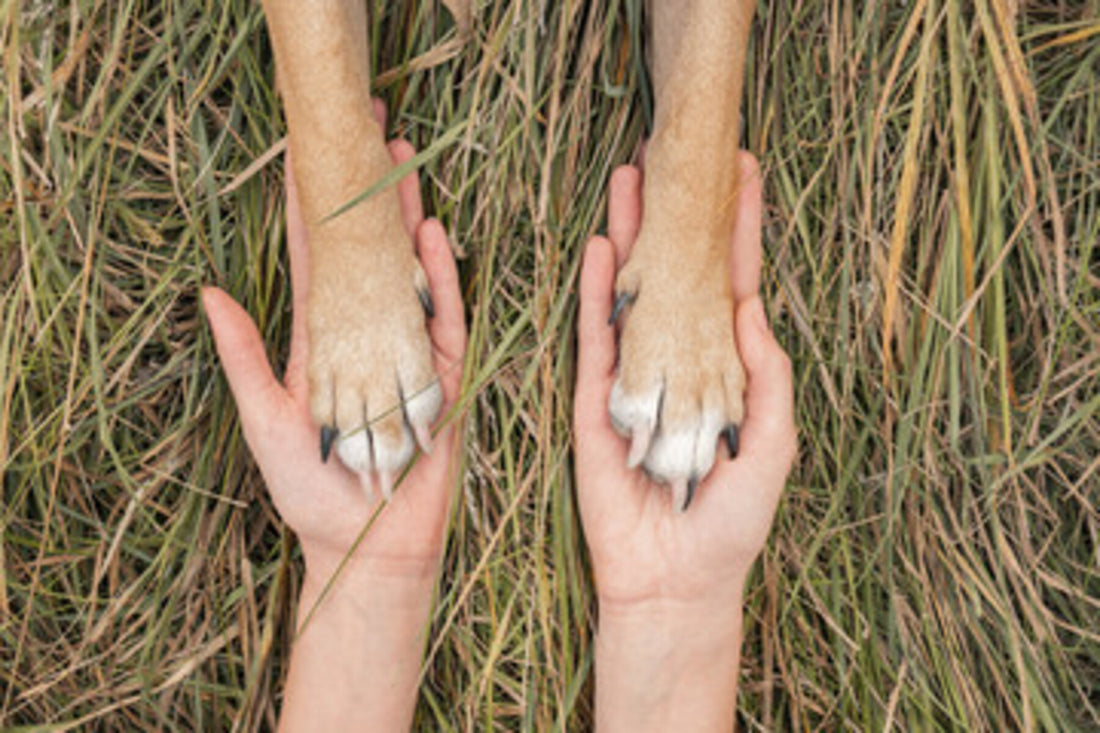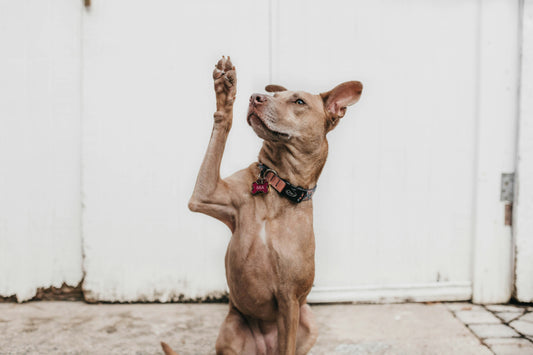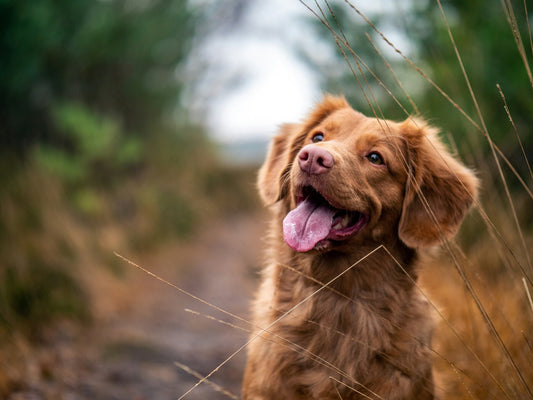Dogs Paws: Addressing Issues from Licking to Cracking

Every dog owner knows the joy of being greeted by their furry friend, wagging tail and those enthusiastic paws tapping the floor. But have you ever paused to consider the health of those paws, especially when you notice signs like licking or visible cracks?
Your dog’s paws are a window into their overall health. In this article, we’ll tell you how to address common issues related to their paws, ensuring they are always ready to explore the world with you.
Understanding the Significance of Dog Paws
Your dog’s paws are remarkable structures. Composed of various layers, including bones, tendons, ligaments, and the all-important paw pads, they offer your dog stability, traction, and a degree of shock absorption.
Beyond these functional aspects, did you know that paw health can act as an indicator of your dog’s overall well-being? From dry paw pads to deeper health concerns, the state of your dog’s paws can provide key insights.
Common Problems With Dog Paws
Like our feet, dog paws encounter multiple challenges daily. They walk on different terrains, experience temperature extremes, and occasionally step on something they shouldn’t.
As a result, dogs often deal with fungal and bacterial infections, injuries, or allergies affecting their paws. Among the multitude of issues, a dog’s cracked paws stand out as a prevalent concern that warrants attention, primarily due to the discomfort and potential complications it can pose.
Diving Deep into Cracked Dog Paws
Cracked paw pads can range from superficial dryness to deep, painful fissures. Imagine walking with a split in your heel; the sensation is similar for our four-legged pals. The severity can vary with some dogs experiencing mild discomfort while others face significant pain, especially if the cracks bleed or get infected.
Main Causes Behind Cracked or Dry Paws
Dogs, much like us, face a plethora of environmental challenges that their paws must withstand. One of the primary culprits behind cracked paws is the environment. Scorching hot pavements in the summer can burn and dry out paw pads, while ice and the harsh salts used during winter can have a similar desiccating effect. And it’s not just the great outdoors; household cleaners and lawn chemicals can serve as irritants, leading to dry and cracked dog paws.
Yet, it’s not just external factors at play. Lack of moisture, certain diets leading to dehydration, and even health issues such as thyroid disorders or dermatitis can contribute to the problem. Understanding these causes is paramount, as it not only aids in treatment but also in prevention. As pet owners, being aware of these factors can help us provide the best care for our dog’s paws, ensuring they remain healthy and ready for the next adventure.
Symptoms Associated with Cracked Paws
Identifying the issue early can make all the difference in treatment. While the physical signs might seem evident—like the visible cracks, dryness, or discoloration of the paw pads—it’s essential to be mindful of the behavioral changes as well.
A dog with cracked paws might exhibit excessive licking of their feet, a natural response to soothe the discomfort. Other telling signs include limping, a reluctance to walk, or even showing signs of pain when their paws are touched.
Treat Cracked Dog Paws
Treating cracked paws requires a dual approach: treating the existing cracks and preventing future ones. If the cracks in your dog’s paws seem deep, are bleeding, or if they exhibit signs of severe pain, a visit to the vet is essential. They might recommend specific treatments, or in severe cases, antibiotics to combat potential infections.
At home, you can consider using topical treatments. Various balms, ointments, and moisturizers are specifically designed to soothe cracked dog paws. These products often contain healing and moisturizing agents that can provide relief and speed up the healing process. However, always ensure that any product you use is pet-safe.
Prevent Dry Cracked Dog Paws
As the saying goes, “Prevention is better than cure.” To prevent cracked paw pads, consider dog boots or protective wax for walks, especially during extreme weather conditions. Implementing a routine moisturizing regimen for your dog’s paws can also be beneficial.
Lastly, dietary adjustments that focus on hydration and skin health can make a difference. Omega-3 fatty acids, for example, can help improve skin elasticity and overall health.
The Danger of Over-Licking and How It Relates to Cracked Paws
When dogs feel discomfort in their paws, their instinct is to lick them. While this might seem harmless and even a bit endearing, excessive licking can exacerbate the problem. Continuous moisture from licking can lead to further drying once it evaporates, making the paws even more susceptible to cracking. Furthermore, the saliva can introduce bacteria to the cracks, leading to potential infections.
But why do dogs lick their paws in the first place? Beyond physical discomfort, excessive licking can also be an indication of anxiety, boredom, or other behavioral concerns. Addressing the root cause, be it physical or psychological, is crucial to curb this behavior and ensure the well-being of your furry friend.
Deeper Look at Products to Help with Paw Health
The market today offers a plethora of products designed specifically for the health and well-being of dog paws. But not all products are made equal. When considering options, it’s essential to prioritize those that are vet-approved and made from natural ingredients.
One of the most recommended products for paw health is a protective paw balm. When applied to your dog’s paw pads, it creates a barrier against harsh environmental factors like hot pavements or cold ice. They can also provide much-needed moisture and help to heal and prevent cracks.
In addition to balms, certain supplements can promote better skin and paw health from the inside out. Omega-3 fatty acids, biotin, and vitamin E supplements can enhance skin hydration and elasticity, reducing the likelihood of cracked paw pads. However, it’s always best to consult your vet before introducing any new supplement to your pet’s diet.
Lastly, if your dog has a propensity for wandering into areas where they might come into contact with harmful chemicals or irritants, consider dog boots. They not only protect against irritants but also provide added traction and reduce the risk of injury.
Daily and Seasonal Paw Care Routine
Just like how we have daily skincare routines, dogs benefit from regular paw care. Every day, make it a habit to check your dog’s paws for any visible signs of injury, foreign objects, or dryness. A gentle cleaning with a damp cloth can remove debris and harmful substances they might have picked up during their walks.
Seasonal changes pose unique challenges for our pets. In summer, try to walk your dog during cooler parts of the day to avoid the scorching pavement. In contrast, winter brings with it the dangers of ice, salt, and extremely cold surfaces. Using protective waxes or dog boots can be a game-changer during these extreme conditions.
Consistency is the key to preventing many paw-related issues. By integrating these routines into your pet care, you ensure that your dog’s paws remain as healthy and robust as they are adorable.
Tips for Dog Owners: Ensuring Optimal Paw Health
Caring for your dog goes beyond feeding and playing; it’s about ensuring every part of them is healthy, including their paws. A dog’s paws, though tough, are sensitive and require regular attention to keep them in top condition.
Regular grooming is paramount. While you might be used to trimming your dog’s fur, don’t forget about the hair between their paw pads. This hair can trap dirt, debris, and moisture, leading to potential infections or matting. By trimming it regularly, you ensure that their paws remain clean and dry.
The space your dog inhabits, both indoors and outdoors, plays a significant role in paw health. Ensure that your yard is free of sharp objects, harmful chemicals, and irritants. It’s also essential to keep their indoor resting area clean to prevent any bacterial or fungal growth, which could transfer to their paws.
Conclusion
Taking care of your dog’s paws is crucial. Not only do these pads help them explore the world, but they’re also indicators of overall health. From understanding the significance of paws and addressing common issues like cracking to knowing how to protect and nurture them through products and routines, every dog owner has a responsibility to ensure their pet’s paws are in the best condition.
At Bando, we’re dedicated to your pet’s well-being. Our range of care products and supplements is curated to offer the best for your dog. So, if you’re looking to give your dog the best care possible, browse our catalog and feel free to reach out to our expert team for assistance. Your pet deserves nothing but the best, and we’re here to help you provide just that.






